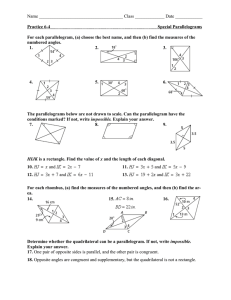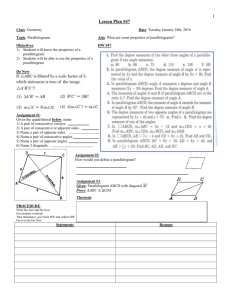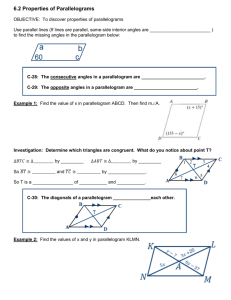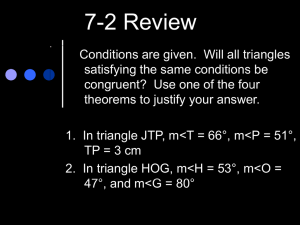GEOMETRY: PARALLELOGRAMS COMMON MISTAKES 10/20/2009 1
advertisement
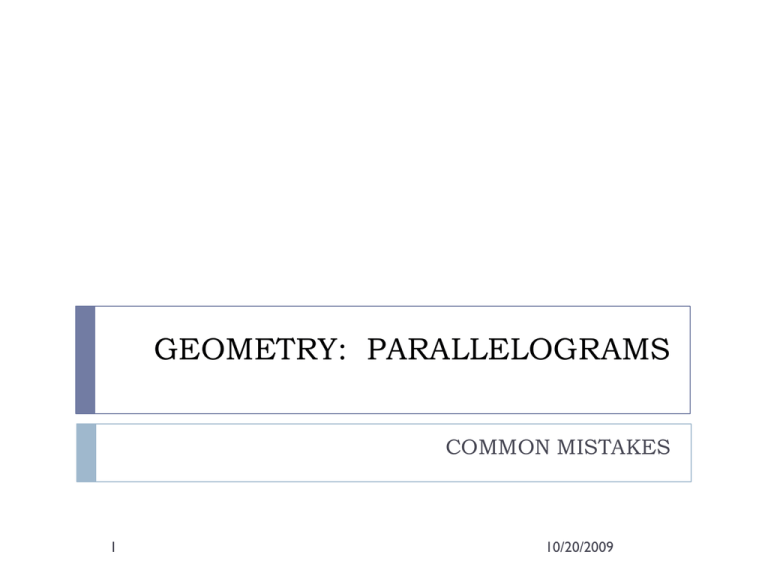
GEOMETRY: PARALLELOGRAMS COMMON MISTAKES 1 10/20/2009 Geometry-Parallelograms Defining Parallelograms and the Quadrilaterals They Include Definition-PARALLELOGRAMS are quadrilaterals (4 sided polygons) whose opposite sides are congruent and parallel; and whose opposite angles are also congruent. The diagonals of a parallelogram bisect (divide a segment into two congruent segments) each other. RECTANGLES-are parallelograms with 4 right angles. SQUARES-parallelograms with 4 right angles and 4 congruent sides. A square is a special type of Rectangle and Rhombus. RHOMBUSES-are parallelograms whose diagonals are perpendicular. 2 Common Mistakes Forgetting which properties belong to which quadrilateral. L M W X P N Z Y Incorrect: Parallelogram WXYZ has 4 right angles. Correct: Rectangle LMNP has 4 right angles. Parallelogram WXYZ has opposite angles congruent. 10/20/2009 Geometry-Parallelograms and Perimeter How to Understand the Perimeter Concept. Perimeter of Polygons is the term used to describe the linear measurement around a polygon. Units of Perimeter are the same as those given for length (i.e. cm, ft, yd, m, etc.) Common Mistakes Confusing Perimeter with Area (the amount “inside” a polygon); even using the wrong units. J K 10 in M Perimeter Formulas: Pparalle log ram = 2 • length + 2 • width Incorrect: = P Prec tan gle = 2 • length + 2 • width Psquare= 4 • side Pr hom bus= 4 • side 3 L 13 in 13in • 10in = 130in2 Correct: Prec tan gle = 2 • 13in + 2 • 10in Prec tan gle = 46in 10/20/2009 Geometry– Parallelograms and Area Understanding the Concept Common Mistakes of Area of Parallelograms Area of a polygon applies to the “stuff” inside the polygon where as perimeter is the distance around the polygon. AREA AREA-units become 2-Dimensional (sq cm, sq ft, sq m, etc.) Area Formulas for Parallelograms: A paralle log= base • height ram A rec length • width = tan gle A square = side2 A r hom bus diagonal1 • diagonal2 = 4 ALL Area formulas for parallelograms deal with two dimensions, called either the base and height or length and width. These 2 measurements are multiplied together; and thus, the units are “squared”( to the second degree or 2-Dimensional) “height” of a parallelogram or any polygon- refers to the figure’s perpendicular height not the side length. h Side length 10/20/2009
